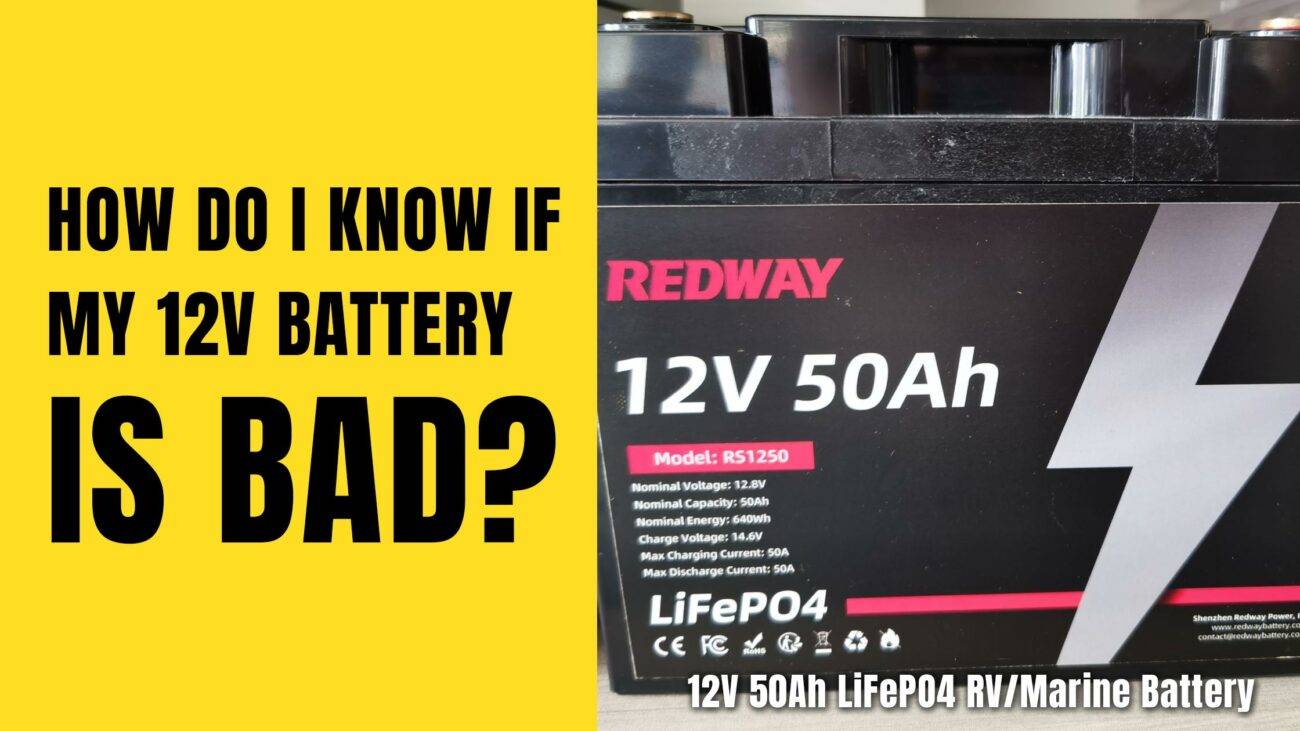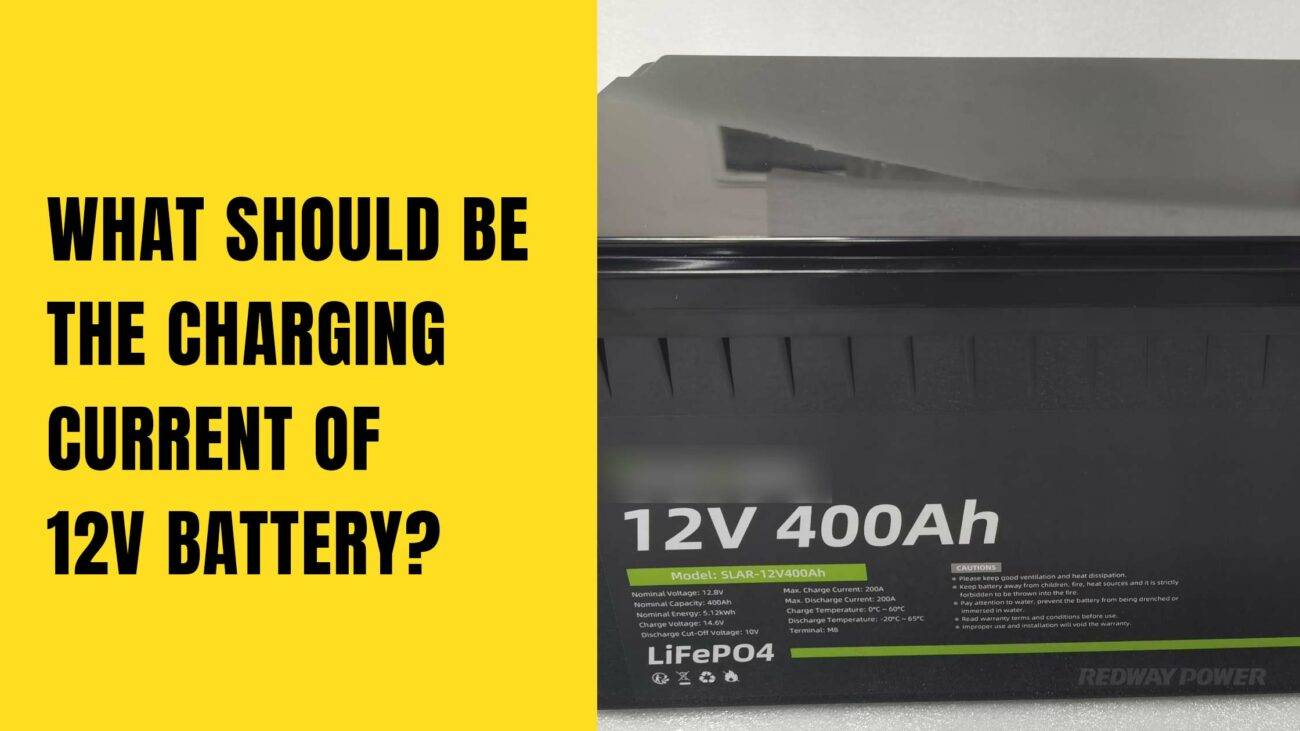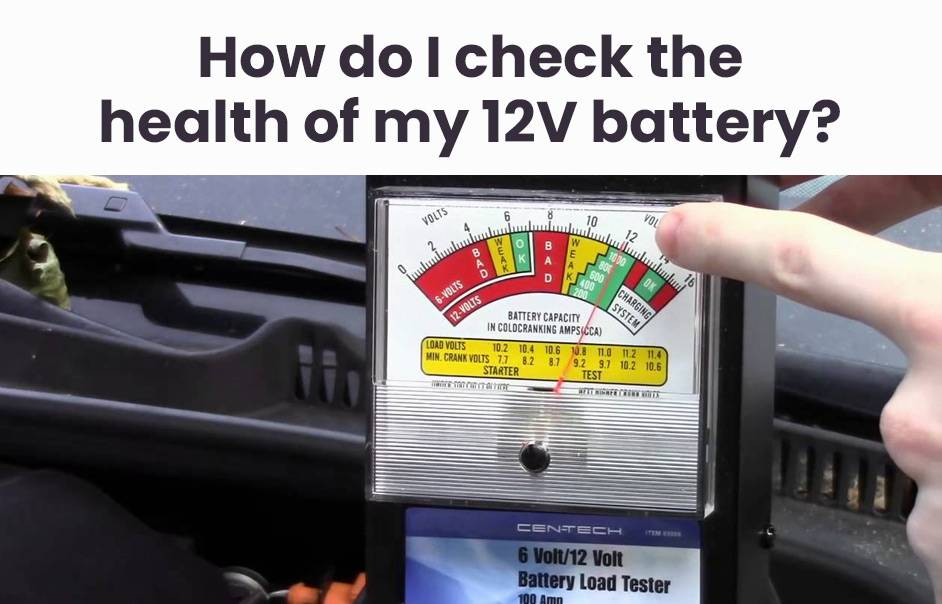Imagine the frustration of a dead car battery on a busy morning. The reliability of your vehicle’s 12V battery is crucial, yet often overlooked. Understanding how to test it becomes a valuable skill. Delving into the art of multimeter use not only empowers you to preemptively tackle battery issues, but it also equips you for a broader understanding of automotive care. In the world of DIY auto maintenance, knowing how to properly test a 12V battery is a fundamental skill. The proper tools—like a multimeter, safety gloves, and goggles—are the unsung heroes of precision and safety in this process. To embark on this process, precautions are a must; ensuring the engine is off and personal safety is addressed lays the groundwork for an accurate test. This article is a comprehensive guide, detailing each step in assessing a 12V battery’s health with a multimeter, and it divulges tips for the most accurate readings. It will also touch upon advanced battery testing techniques for those looking to deepen their understanding.
Why check a 12 volt battery with a multimeter?
Checking a 12-volt battery with a multimeter is an essential task to evaluate a battery’s health and performance. By using a multimeter, a handy tool often found in engine bays, one can obtain an accurate reading of the battery voltage which indicates the state of charge. A fully charged battery typically shows a voltage between 12.6 and 12.8 volts; however, if the voltage drops below 12.4 volts, the battery may be considered drained and could potentially be a dying battery.
Performing this test is straightforward: set the multimeter to the proper voltage range, connect the red probe to the positive battery terminal and the black probe to the negative terminal. The initial reading will help determine if further action is needed. Although a multimeter provides a reliable initial assessment, it may not fully reveal a battery’s ability to hold a load. For a comprehensive battery health check, one might opt to use a hydrometer-style battery tester or carry the battery to a professional service for further diagnosis. This is especially critical for automotive batteries to prevent a flat or dead battery situation that could leave you stranded.

Tools needed
Before diving into the task of checking the health of a 12-volt battery, it is essential to gather all the necessary tools. A multimeter or a voltage tester is the primary instrument required for this process. These tools are readily accessible at hardware stores or can be purchased online. For electric scooter batteries, which are often located beneath the deck or seat, you may need to remove specific panels or covers to access the battery. It’s imperative to turn off the electric scooter and ensure it is not connected to any power source before you begin testing the battery to prevent any accidents. When setting up your multimeter for the battery check, make sure to adjust it to the 20-volt DC setting for an accurate assessment. Alternatively, if using a voltage tester, simply turn it on to start measuring the battery’s condition.
Multimeter
A multimeter is an indispensable and adaptable tool that can read various electrical values such as voltage, current, and resistance. While there are analog multimeters available, most people use digital multimeters today for their ease of use and precise readings. Should you need to measure the current flowing through a circuit, it’s crucial that the multimeter is connected properly in series with a load. Moreover, multimeters are equipped with several ports for measuring different ranges of current—selecting the correct one is necessary for obtaining accurate results. In the realm of testing electrical circuits, the multimeter is your go-to device, allowing you to obtain key data points such as voltage levels, continuity, and other essential electrical characteristics.
Safety gloves
When preparing to clean battery terminals or conduct any maintenance, it is important to wear a pair of safety gloves. These gloves are your first line of defense against harmful chemicals and battery acid. Similarly, when using a multimeter to check a car battery, the right safety equipment—including gloves and safety goggles—should be worn. Ideally, these gloves should be made of nitrile or rubber to offer the maximum protection when handling battery caps or the battery itself. Not only do safety gloves protect your skin from caustic substances, but they also help maintain safe working conditions during battery-related tasks.
Safety goggles
Protecting your eyes is just as critical as shielding your hands when working with batteries. Safety goggles are strongly recommended for anyone testing a 12V battery with a multimeter. The potential risk of acid splashes or leaks during the testing process means that prioritizing safety by wearing goggles alongside safety gloves is non-negotiable. Safety goggles serve as a barrier against unforeseen accidents, preventing battery acid from harming your eyes. As part of a comprehensive safety strategy when working on batteries and using multimeters, the wearing of safety goggles is an absolute necessity to avoid eye injuries and ensure a safe testing environment.
Precautions before testing
Before you proceed with testing a 12-volt battery using a multimeter, there are several precautions you need to take to ensure both your safety and the accuracy of your reading. Firstly, it is crucial to test the battery after it has settled for a minimum of an hour to accurately capture the resting voltage. This is the true measure of the battery’s state of charge, without the influence of recent charging or discharging activities.
For the most accurate gauge of the battery’s state of charge, ideally leave the car untouched overnight and carry out the testing first thing in the morning. Access to the battery terminals typically found in the engine bay should be clear and unobstructed. If the battery’s location is not familiar to you, refer to the vehicle’s owner’s manual for guidance. Finally, always make sure the engine is turned off before testing the battery. This is an essential safety step to avoid potential electric shock and to ensure ease of access to the battery terminals without interference from the vehicle’s electrical systems.
Ensure the engine is turned off
To begin with, make certain that the vehicle’s engine is turned off before attempting to check the battery with a multimeter. A running engine can affect the accuracy of your measurements by introducing additional electrical activity from the vehicle’s systems. Turning off the engine is not just about getting a correct voltage reading—it’s also a critical safety measure. By ensuring all electrical systems are inactive, you eliminate the risk of electric shock and create a more controlled environment for the test. This allows you to confidently and safely access the battery terminals which are usually found within the engine bay.
Remove any jewelry or metal objects
When handling a car battery and using a multimeter, safety should always come first. To prevent accidental short circuits or electric shocks, always remember to remove any jewelry or metal objects you’re wearing before starting the test. As a safety precaution, it is also advised to wear protective gloves and safety goggles when working with a battery. This will safeguard you against potential hazards, such as electrical sparks and corrosive battery acid.
When it’s time to use the multimeter, connect its probes correctly: black to the COM port and red to the VΩmA port. By firmly attaching the probes, you ensure a safe connection for an accurate multimeter reading. While handling the battery and multimeter, be mindful that no metal objects or any part of jewelry comes in contact with the battery terminals to avoid unwanted electrical conductivity and the associated risks.
Step-by-step guide to check a 12 volt battery with a multimeter
Checking a 12-volt battery accurately necessitates setting your multimeter correctly. Begin by turning the multimeter’s dial to the DC voltage mode, which is usually denoted by a ‘V’ with a straight line, signifying direct current. Choose a range that exceeds the expected battery voltage—typically the 20-volt setting on your multimeter is appropriate. This ensures that you get a reading that falls comfortably within the multimeter’s capacity, resulting in an accurate reading. A multimeter set to the correct voltage range is the first step in the testing process and is vital for the reliability of your results.
Step 2: Connect the multimeter to the battery terminals
Now that your multimeter is set up, you’re ready to connect it to the battery. Start with the red probe, touching it to the positive battery terminal, often marked with a plus (+) sign or covered with red plastic. Then, take the black probe and attach it to the negative terminal, which usually has a minus (-) sign or is covered with black plastic. Ensure a firm and clean contact with each terminal to prevent inaccurate readings due to poor connections. This arrangement corresponds to the conventional color coding where red is positive and black is negative, which helps maintain consistency and safety during the testing process.
Step 3: Take the voltage reading
With your probes securely in place, it’s time to read the voltage. Observe the multimeter’s display for the voltage reading. A 12-volt battery in peak condition should display a voltage ranging between 12.6 to 12.8 volts. This signifies a fully charged battery. If the reading is between 12.4 and 12.6 volts, the battery is around 75% charged and can be considered healthy. Should the voltage be below 12.4 volts, this suggests the battery is less charged or possibly in a state of discharge and might need attention. Always remember that the engine should be off during this test to avoid false readings through electrical interference from other components.
Step 4: Interpret the voltage reading
The final step is to interpret the voltage reading you’ve obtained. Here is a quick reference:
- 12.6 – 12.8 volts: Your battery is healthy and fully charged.
- 12.4 – 12.6 volts: Battery is about 75% charged and in acceptable condition.
- Below 12.4 volts: The battery is likely undercharged or possibly faulty.
If the reading falls well below the 12-volt mark, especially after attempted charging, the battery may be bad and in need of replacement. Be aware that batteries can decline over time, and individual cells within the battery may fail, affecting the overall performance. For a more in-depth analysis, you could employ other testing methods such as a battery load test or a hydrometer-style battery tester to measure the specific gravity of the battery acid, providing further insights into the health of the individual cells. However, for a quick check to determine if your battery is broadly in a good or poor state, the multimeter provides a simple and effective measuring tool.
Note: For nuanced results, your testing environment should ideally be close to room temperature, as extreme cold or heat can affect battery performance and might skew your voltage reading.
Also, if the battery light in your vehicle’s dashboard is illuminated, it could indicate a fault with the battery or charging system. In this case, even if the multimeter reading is within the normal range, further investigation may be warranted.
Tips for accurate readings
For a reliable assessment of your automotive battery’s health using a multimeter, it is essential to first measure the battery voltage with the engine off. A fully charged, healthy 12V battery should typically show a voltage reading in the range of 12.6-12.8 volts. To conduct this test, ensure that your multimeter is set to the correct voltage range, ideally the 20V setting for a 12V battery.
Once you have taken the initial reading with the vehicle at rest, proceed to start the engine and measure the voltage again. The voltage should now increase to between 13.8V and 14.4V, which reflects the normal operating range for a charging system at idle speed. When the engine is running, the alternator charges the battery; hence, a reading in this range indicates that both the battery and the charging system are likely functioning correctly. Should the multimeter reading fall outside of this range, it may signal a charging problem, either undercharging or overcharging, which requires further investigation to safeguard the longevity of the battery.
Allow the battery to rest before taking readings
For the most accurate voltage measurement, it is imperative to allow the battery to rest prior to testing. This eliminates any superficial surface charge that might result from recent charging or electrical system activity, providing a more genuine reflection of the battery’s state of charge. At least 30 minutes rest is recommended, but for a particularly precise reading, leaving the vehicle undisturbed overnight and performing the test first thing in the morning is most ideal. This “resting voltage” is crucial, as it exposes the true starting position of the battery’s charge without the influence of recent usage or charging that could skew results.
Check the battery under load
While voltage readings offer valuable information about the battery’s charge state, performing a load test is instrumental to understand how the battery behaves when it is under the stress of actual use. For common batteries such as AA, AAA, C, and D, as well as 9V batteries, certain multimeters provide a function to test them under load. The appropriate setting for alkaline batteries is usually 1.5V for cylindrical types and 9V for rectangular ones.
When applying a load, settings should reflect the specific battery type—1.5V for standard household batteries and 9V for those of the same voltage. A fresh 1.5V battery under load should output approximately 4 milliamps, while a new 9V battery should show close to 25 milliamps. Values below these can indicate the battery no longer has its full capacity to perform under load, effectively labeling it as a dead battery. This aspect of testing is particularly insightful as some batteries may display an adequate voltage when not under load, yet fail to deliver the necessary power when in use, revealing a more nuanced picture of battery health.
Additional considerations for battery testing
When checking the health of a 12-volt battery with a multimeter, there are a few additional considerations that can provide a more thorough insight into the battery’s state of charge and overall condition. It is advisable to test the battery after it has been sitting for at least an hour to accurately capture its resting voltage, which is a strong indicator of its baseline state of charge. To measure the battery’s performance more effectively, especially in situations that mimic real-world usage, a battery load tester can offer a much clearer and more precise depiction of its true capability.
Monitoring the battery voltage under different conditions, like when the alternator is meant to charge it, can also reveal important information about the electrical system. A beneficial method to test the alternator’s performance is by turning on all the vehicle’s electrical equipment—such as headlights, air conditioning, and radio—and observing whether the multimeter shows a voltage between 13.8V and 14.4V. If the reading falls outside this range, it may indicate an issue with the alternator or the charging system.
By keeping up with regular checks and periodic testing using a multimeter, you can preemptively spot indications of potential problems, enabling timely intervention before an unexpected battery failure occurs. This proactive approach to maintenance can ultimately save time, money, and inconvenience.
Testing individual cells with a hydrometer-style battery tester
For an automobile owner with a non-maintenance-free battery, accessing and testing each individual cell can offer a more detailed picture of battery health. Utilizing a hydrometer-style battery tester lets you measure the specific gravity of the battery acid in each cell, which can be a signal of the condition and charge level of each cell. When cells display varying specific gravity levels, this can indicate dead or faulty cells within the battery.
A dead cell identified through a hydrometer reading usually offers a similar conclusion to that of a flat battery diagnosis from a multimeter voltage test. In some cases, cells that have low specific gravity may be replenished slightly by carefully adding a small amount of distilled water. Remember, when performing such tasks, always wear the proper safety equipment, including nitrile or rubber gloves and goggles, to protect against the corrosive nature of battery acid.
Using a battery load tester for a more comprehensive assessment
While using a multimeter gives a snapshot of the battery’s voltage, a battery load tester takes the assessment further by applying a load comparable to that of starting a vehicle. This load testing mimics the battery’s performance under typical engine starting conditions. The more substantial and longer the load is applied, the more you can trust that the readings reflect the battery’s true capability to hold and deliver power under stress.
Small, portable battery testers may simulate some load but typically cannot replicate the extensive load conditions a professional battery tester can. Pro-grade equipment may provide more elaborate data, including the battery’s ability to maintain voltage under load over a set duration. These comprehensive results can guide you more accurately in determining whether a battery is in good condition or whether it’s time to consider a replacement.
Load testers vary in complexity from simple analog models to advanced digital diagnostic tools. Empowered with this information, you can ensure that your car battery maintains peak performance, ensuring your vehicle’s reliability and extending the battery life.










